We have valleys in the United States, but the ones I know are huge, indistinct, developed, and subject to the desires and needs of thousands of people.
Scotland has glens. They’re valleys, too. But in some parts of the country they’re everything American valleys are not.
Walking up a glen in the Highlands—some, at least—is like ascending the floors of a manor house, or digging down through geological strata. You start in one world and proceed, doing nothing but keeping a reasonable pace. Soon enough, you pass through other worlds.
Mark Beckwith and I began our ascent of Glen Roy at Roybridge, a village east of Spean Bridge on a major road called the A 82. We turned at a hotel—possibly the only one in the village—onto an asphalt road heading into the hills. It turns out the road was paved for miles, passing well-maintained and handsome houses–a rich neighborhood, in a word. Like many Scottish roads, this one was one-lane, with pullouts (“passing places).
We stopped for lunch at a stone bridge and had entertainment as we ate. A young man in a big truck—he was delivering construction supplies, I believe—descended the road and stopped before crossing the bridge. He got out and dismounted a skidder-like vehicle attached to the back of the truck; it was going to make the truck too long to make the turn onto the bridge.
He threaded the needle and stopped on the other side, partway up the incline the bridge had spanned. He retrieved the skidder, reattached it, and moved on. We waved at him several times.
We passed by a mailbox in the middle of nowhere (but still on a tarred road, so I guess it was somewhere). You can’t find these for love or money in Baltimore.
We passed by old houses, with slight variations from one another. One was a dusty green, a color I’d never seen over here.
Unlike many glens, Glen Roy has distinct benches at varying levels above the river valley. Important geological insights were made here. Some natural historians, including Charles Darwin, believed they were evidence of old seashores. Louis Agassiz correctly described them as the result of damming caused by advancing and retreating glaciers.
The reddish brown swatches on the landscape are fields of dead bracken fern laying like mowed hay. We’ve walked over this. It’s not as hard as over bog.
There was agriculture, or more precisely animal husbandry, for a long distance up Glen Roy. The animals, of course, are sheep. They’re the great mystery product of the Highlands. Their wool has virtually no value. England imports the lamb it sells in supermarkets and serves in posh restaurants from New Zealand. And yet two hours drive to the north of the Borders there are hundreds of thousands, if not millions, of the animals. I’ve asked some well-informed Scots on the Challenge to explain this, and they too are mystified.
Lambing season is over. The lambs are grazing on their own, but never far from their mothers, to whom they run and, butting her teats with their noses, proceed to nurse whenever a nervous-making thing like us passes by. Here are some rare black lambs doing same.
Lambs are cute. (Adult sheep, on the other hand, are intestines covered in very untidy wool.) Lambs are also exceptionally shy. So it was a surprise to us when we encountered one outside the fence in the reeds next to the road. It approached us, bleating.
We looked around for a ewe, but did not see one. The fact there was no frantic mother encountered in the next 10 minutes should have registered more explicitly, but it didn’t. All we knew was that we were on a paved road, which didn’t seem like a great place for a lamb. So, with little effort, I approached and picked it up.
(Is there enough room at the top of my pack for this little thing? I briefly asked myself. I can’t offer milk, but I have some great freeze-dried spaghetti Bolognesi. But I think I’ll start with a dog.)
As it happened, we were near a gate in the fence. With some effort, we opened it and put the lamb into the field, where there were many of its kind. As we walked away, it followed us down the fence.
A few minutes farther on we encountered several sheep (none, however, with lambs) on the other side of the road and also outside the fence. None seemed like a frantic mother, but we had to consider that perhaps our rescued lamb’s mother was one of them.
We went back to the gate and opened it. The lamb was still in view, but now concentrating on getting the attention—the milk and protection, actually—of a ewe nearby. She gently butted him. I approached them both, and the ewe, one of three, headed down the hill from the road, the lamb shadowing it as if she were its mother.
I went back to the gate and closed it. The lesson was: in nature, leave things as they are. I hope for the best for the lamb, but am not optimistic.
The other lesson? You combine a retired bishop and a guilt-ridden agnostic you’re going to get acts of charity that aren’t strictly evidence-based.
We passed the bothy our vetter had recommended. It was as nice as he said.
On we walked.
The paved road ended and was replaced with a two-lane gravel-and-dirt track. We walked through the Highlands that people come for. I personally like the few wild trees that still exist, not the crowded, fast-growing pines of the forestry plantations—the broiler chickens of the lumber business.
There were no people here, not a motor vehicle or structure in sight, and no airplanes or vapor trails overhead. Such emptiness gives one pause, because it wasn’t this way.
“The Scottish Highlands, contrary to the image projected in countless tourist brochures, are not one of the last great wildernesses in Europe, but in many parts can be more accurately described as a derelict landscape from where most of the families who once lived and worked the soil have long gone.”
So writes T. M. Devine, the author of “The Scottish Clearances: A History of the Dispossessed 1600-1900” (2018)
An observant walker occasionally notices piles of stone in vaguely square configurations—the remains of cottages, barns, chapels. One’s tempted to view them as the remains of villages from the Middle Ages. Some may have such an ancient history, but most are from the late 1600s to the 1800s.
In the 1600s “the mass of the population in the Highlands and Islands lived in poor smoke-filled turf huts,” Devine writes. He mentions a traveler in the late 1780s who described dwellings as ”pitiful cots, built of stone and covered with turves, having in them but one room, many of them no chimneys, the windows very small holes, and not glazed.”
One thinks about the life. Devine helps, in his book:
“The common food and drink crops were oats and bere (a hardy form of barley), both grown for their resilience in a harsh climate . . . Oats were the dietary staple throughout the Highlands , while from bere came ale and, later whisky . . . Meat was rarely consumed in Gaeldom as animals were too precious a potential cash commodity for them to be sacrificed as a source of food.”
Many of the paths we are walking on are narrow trenches in the heather-and-grass-covered ground. Who made them? Possibly deer. But some may be much older.
Devine writes: “Stock went on the hoof to the Lowland cattle markets of Crieff and Falkirk for onward sale. So much did their tracks become accustomed to repeated imprint of man and beast that they came to be known in time as the ‘drove roads.’ ”
We walked on, into a zone of history that is now uninhabited. It was hard to imagine people living here 500 years ago, or 1,000 years, or longer. Impossible, almost.
This, to me, is the siren song of history. Anyone can understand the Council of Trent. But can you imagine the lives of the people whose spirits and bones are all around you?
I talked about this with another man, John Meldrum, a 76-year-old Scot who lives in Dunbar. He’s a thoughtful person. He said: ”It was a hard life, but that doesn’t mean it was an unhappy one.”
I guess that must be true. Love and art were made in concentration camps. Love and art were made on plantations in the Mississippi Delta 1890-1935, the cruelest era of American feudalism.
We walked. We finally got to another bothy, where we spent the night. This is the view from it after full moon, minus one day, rose.
Not long before we got there I asked Mark if he noticed anything different about the river we’d been walking along all day.
It was a different river, in the same place, flowing in the opposite direction. We’d walked over the watershed and were in a new glen.
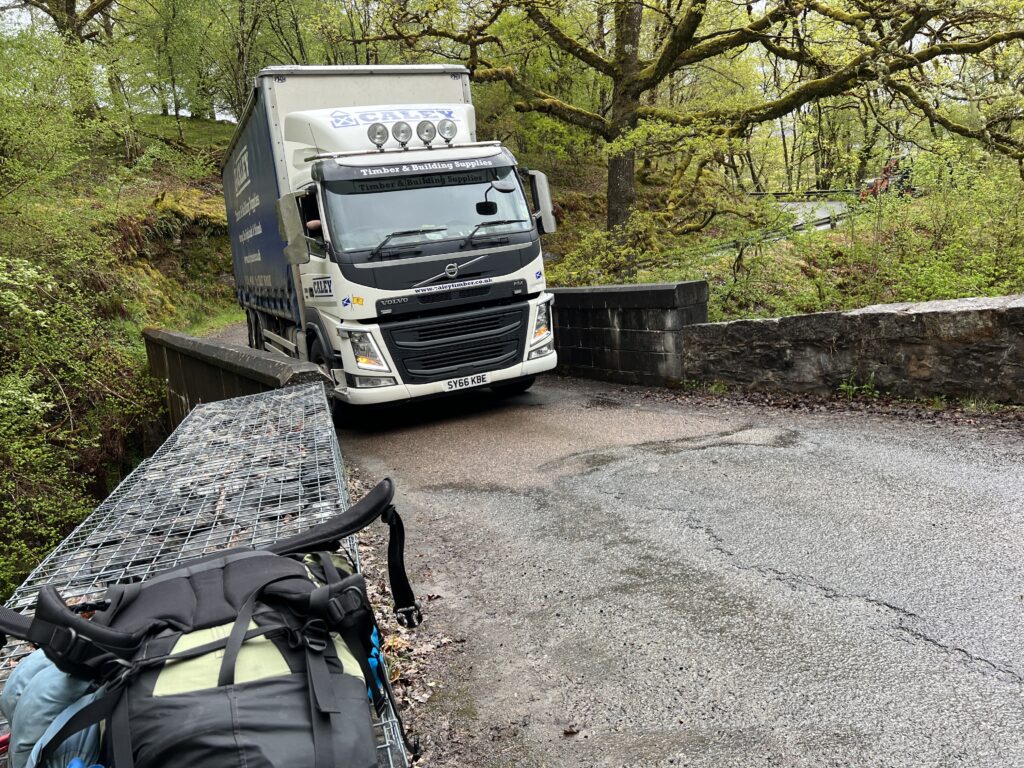
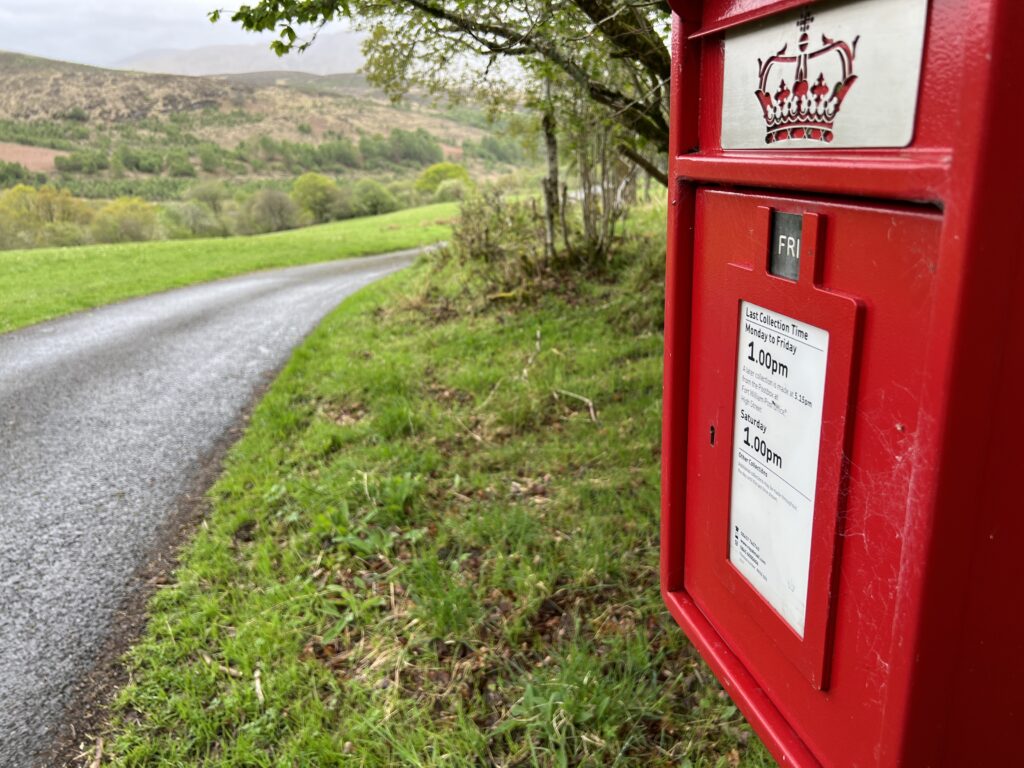
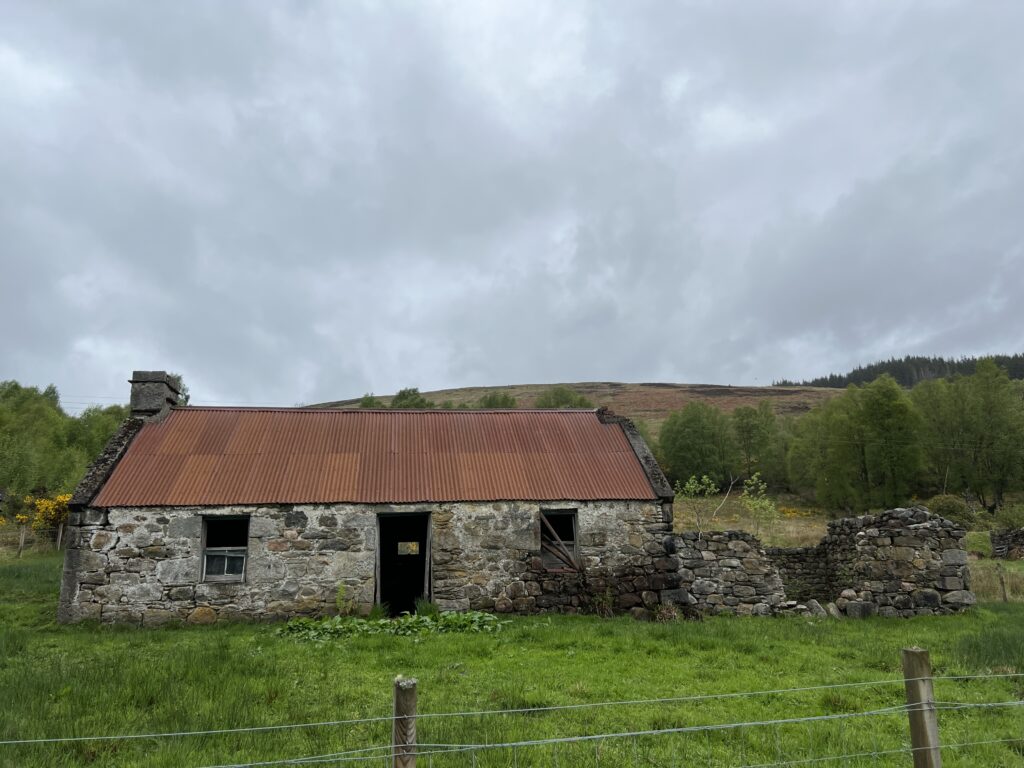
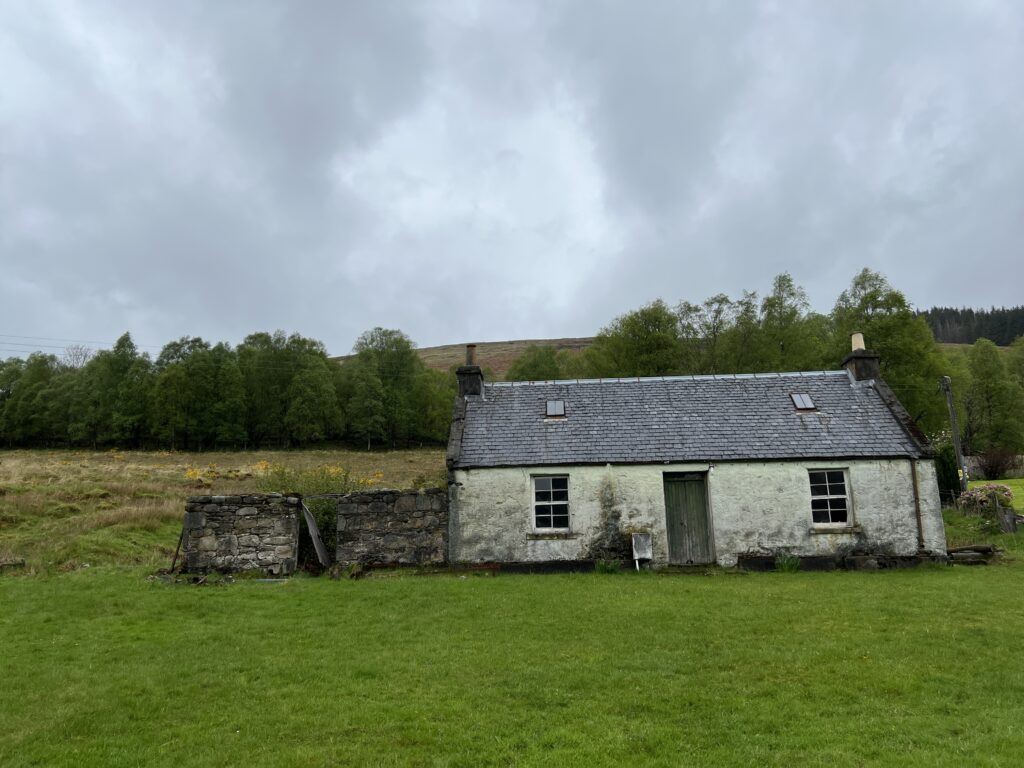
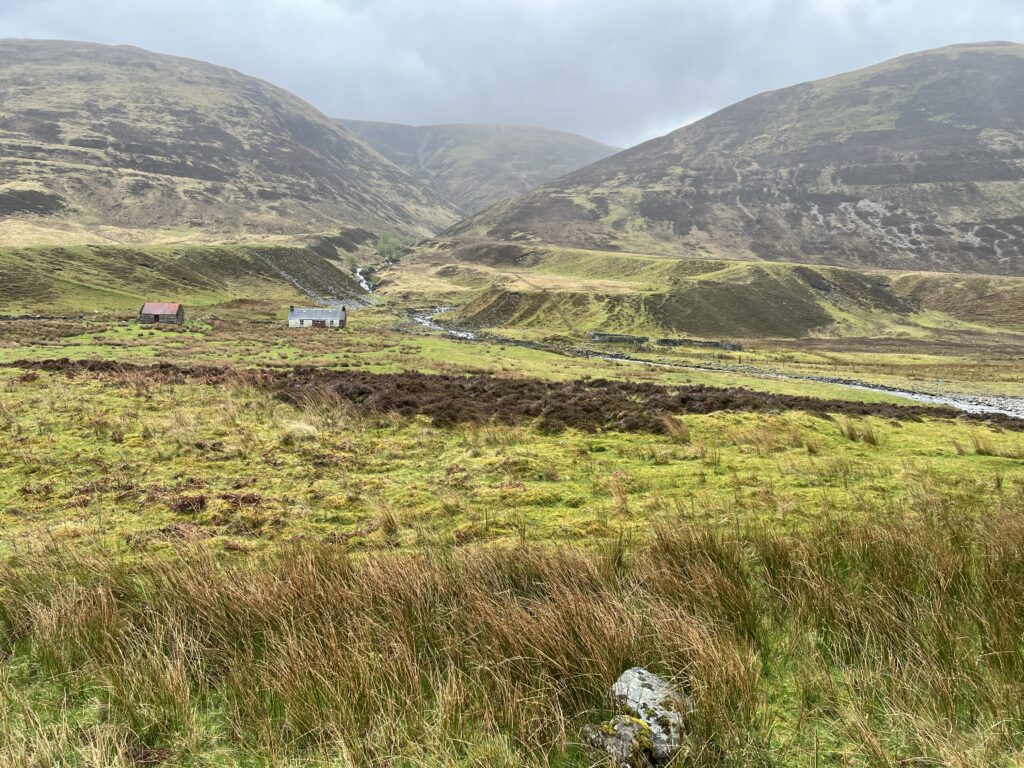
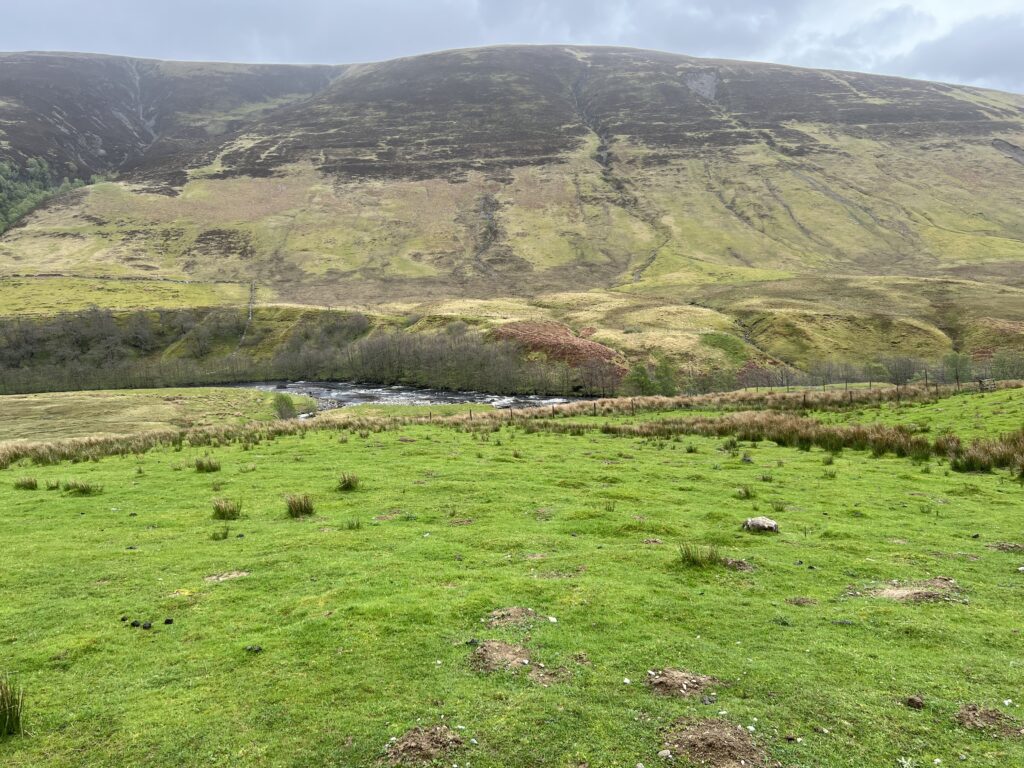
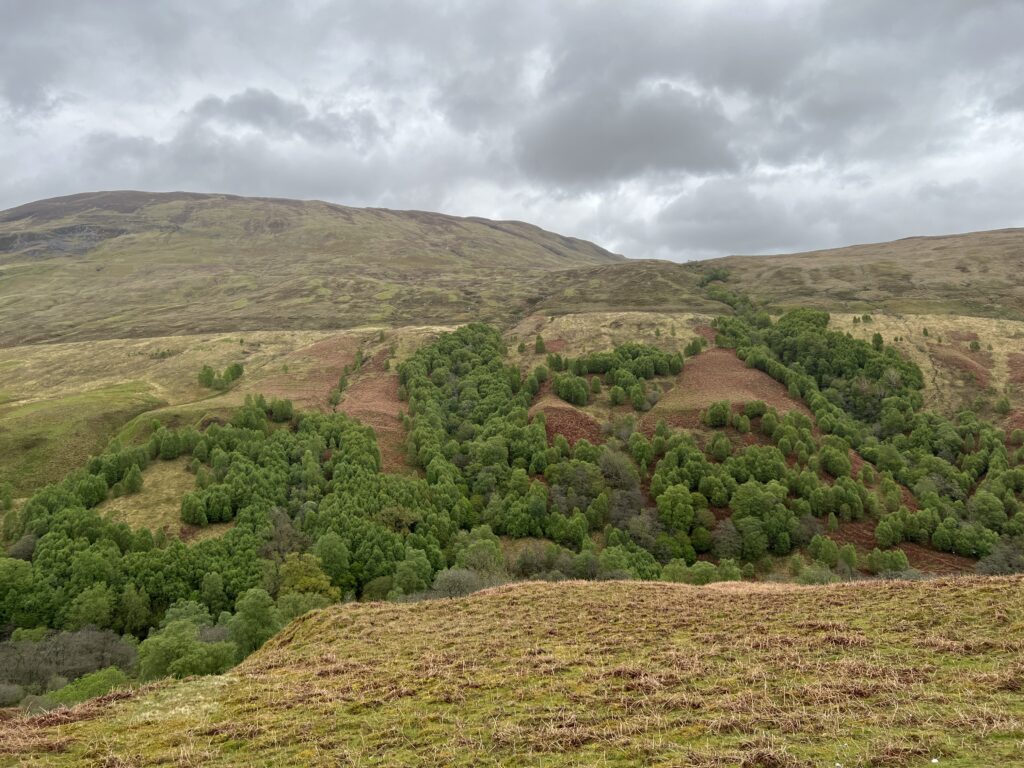
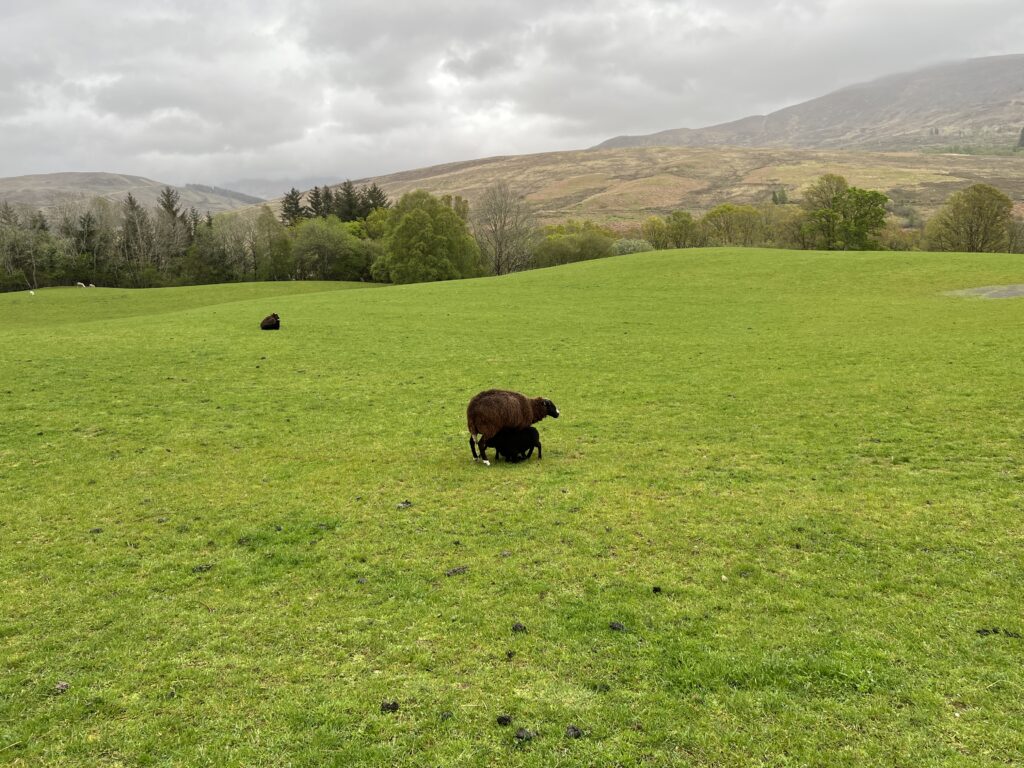

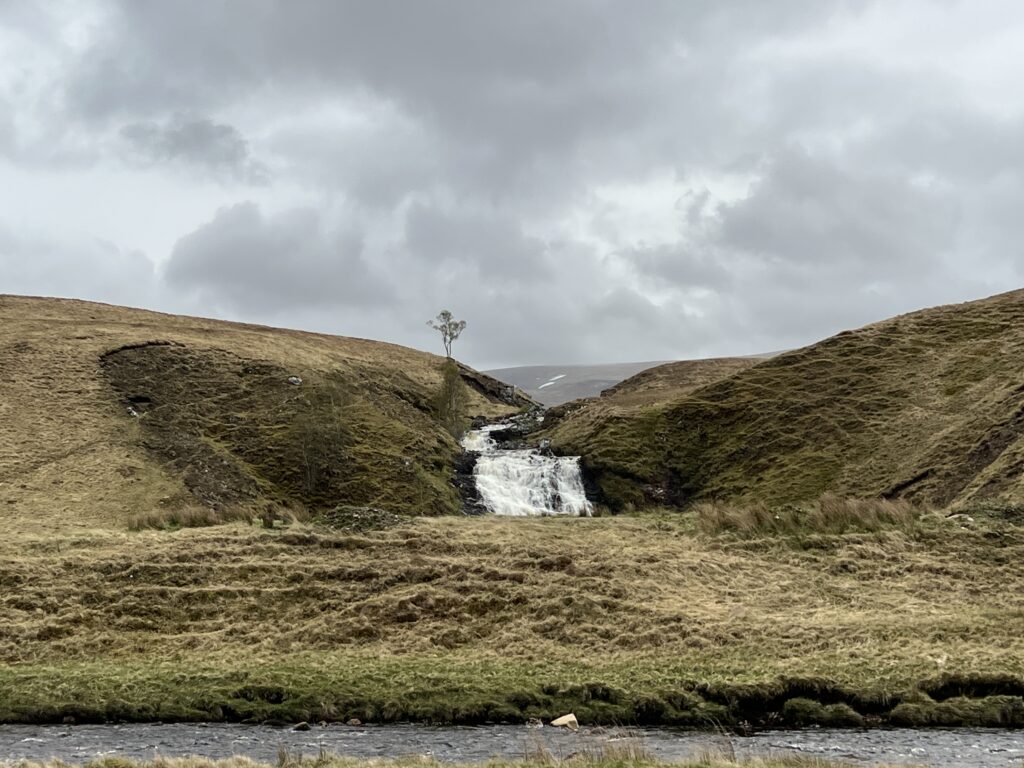
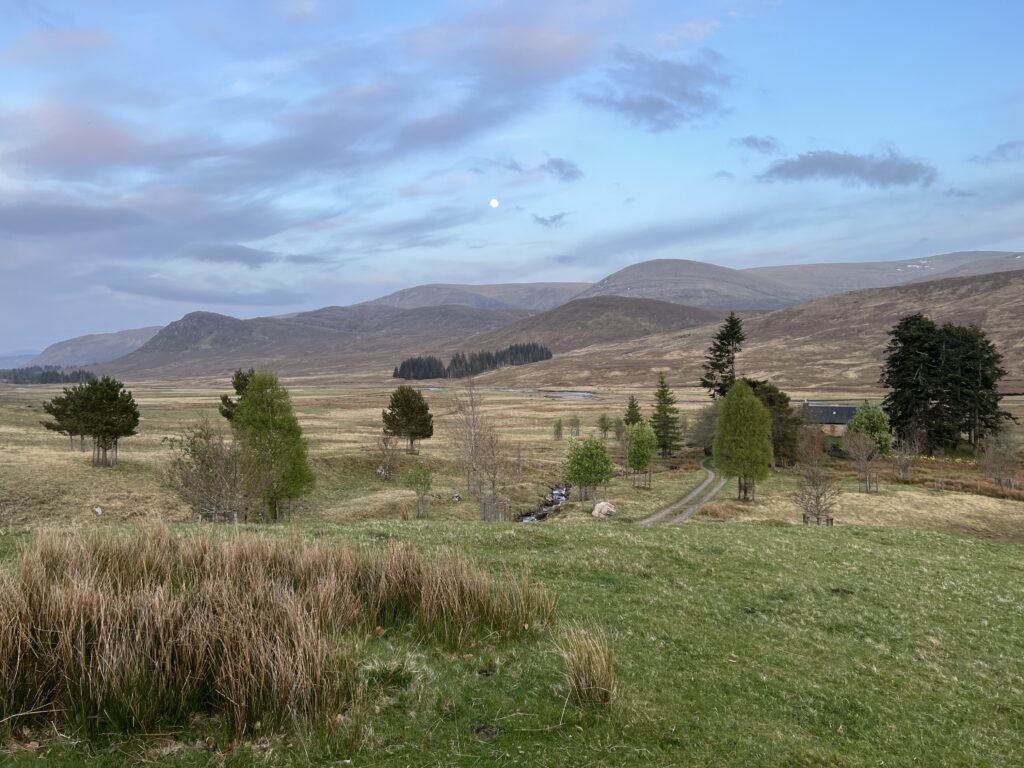

I love this line:
the crowded, fast-growing pines of the forestry plantations—the broiler chickens of the lumber business.